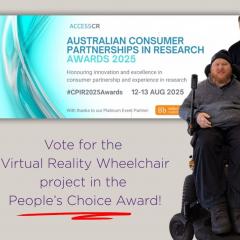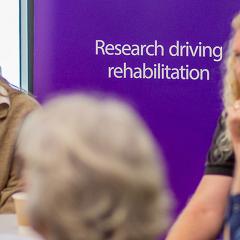What is the research about?
This study explores how physiotherapy delivered through real-time video calls compares with traditional in-person sessions. Telerehabilitation can employ video conferencing technology to provide therapy sessions, allowing patients to receive care from the comfort of their homes. This method has become increasingly relevant, particularly when accessing in-person care is challenging.
Prior research has already demonstrated that physiotherapy delivered via videoconferencing can be clinically effective across various health conditions. Our study systematically reviewed how real-time, video-based telerehabilitation compares with in-person physiotherapy in terms of attendance, adherence, and satisfaction.
What did the researchers do?
Our research team examined numerous studies from five major academic databases (PubMed, CINAHL, Embase, Cochrane, and PEDro), searching for randomised controlled trials that used real-time video to deliver physiotherapy to adults. We looked at how often patients attended these video sessions (attendance), how well they adhered to their exercise programs (adherence), and how satisfied they were with their treatment (satisfaction). Each study was assessed for quality using a system called GRADE (Grading of Recommendations, Assessment, Development and Evaluation) to determine the certainty of the evidence.
What you need to know:
This research is crucial for healthcare professionals, policymakers, and developers of telehealth technologies. It provides evidence that real-time video telerehabilitation is a satisfactory alternative to in-person physiotherapy, with potential benefits in patient attendance and adherence to treatment programs. This knowledge is essential for advancing digital health technologies and ensuring that telehealth solutions are both effective and satisfactory for patients.
What did the researchers find?
We included eight studies for attendance, nine studies for adherence, and twelve studies for satisfaction. Our findings showed that telerehabilitation resulted in an 8% higher attendance at treatment sessions and a 9% higher adherence to home exercise programs compared with in-person physiotherapy. Satisfaction levels were similarly high for both modes of delivery. However, the level of certainty using GRADE ranged from very low to low due to inconsistency and high risk of bias. These results suggest that telerehabilitation may improve attendance and adherence while maintaining comparable satisfaction.
How can you use this research?
Our research provides evidence supporting the use of real-time video telerehabilitation as an effective mode of delivering physiotherapy. Healthcare professionals can consider incorporating telerehabilitation into their practice, especially for patients who may face barriers to in-person visits. Policymakers can use these findings to develop guidelines and standards for telehealth services. Developers of telehealth technologies can focus on enhancing the user experience and addressing technological challenges to further improve patient outcomes. Future research should continue to explore the effectiveness, safety, and patient satisfaction of telehealth solutions to ensure they meet healthcare needs.
About the researchers
Dr Joshua Simmich is a physiotherapist who joined the RECOVER Injury Research Centre in the role of Research Officer in September 2020. He is part of the technology-enabled rehabilitation team, led by Professor Trevor Russell, which focuses on developing more effective and efficient health services supported by technology innovation.
Dr Megan Ross is a postdoctoral fellow at RECOVER Injury Research Centre, The University of Queensland. She is part of a research team, led by Professor Trevor Russell, which focuses on developing more effective and efficient health services supported by technology innovation. Megan’s current research projects include exploring consumer perspectives of the telerehabilitation service delivery model, the impact of rapid transitions to telerehabilitation in the clinical education and hospital environment and exploring the acceptability and usability of a gamified mobile application for exercise prescription adherence.
Professor Trevor Russell is a Professor of Physiotherapy and the Director of the RECOVER Injury Research Centre where he leads a stream of research on Technology Enabled Rehabilitation. He is also co-director of both the Centre for Research in Telerehabilitation and the Telerehabilitation Clinic at the University of Queensland. His research focusses on the use of digital technologies for the remote delivery of health services with a particular focus on telerehabilitation technologies.
Citation
Simmich, J., Ross, M. H., & Russell, T. G. (2024). Real-time video telerehabilitation shows comparable satisfaction and similar or better attendance and adherence compared with in-person physiotherapy: a systematic review. Journal of Physiotherapy. https://doi.org/10.1016/j.jphys.2024.06.001
Keywords
Physical therapy; Systematic review; Telehealth; Adherence; Compliance; Satisfaction
Contact information, acknowledgements
Dr Joshua Simmich BSc (Hons), MPhtySt, PhD
Research Fellow
RECOVER Injury Research Centre
The University of Queensland



